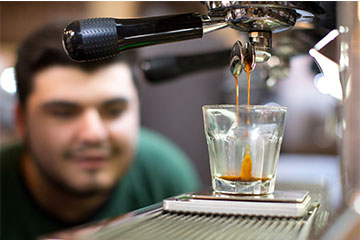Most people who are dependent on caffeine have breakfast with an old friend – the coffee maker. Every morning you scoop in the coffee, add some water and flip it on, but have you ever’ wondered what’s happening inside. How does the water get from the reservoir over to the coffee grounds in the filter basket? How does everything heat up so quickly, and what on earth is that gurgling noise?
In this article, we’ll look inside a typical drip coffee maker so you can understand exactly what’s happening when you make coffee. We’ll also look at the possible problems that might cause your coffee maker to stop working. By the end of this article, you may look at your old friend in a completely new way.
However, let’s do a quick coffee rundown. Coffee plants are’ evergreen tropical shrubs and small trees, and they grow best between the Tropic of Cancer and the Tropic of Capricorn (often referred to in the coffee world as the Bean Belt) ‘which mak’es sense because the plants enjoy lots of rain and gentle temperatures. The two most commonly grown species of coffee plants are Coffee arabica (Arabica coffee) and Coffea canephora (Robusta coffee). For more about details about what’s in your morning cup, check out the article How Coffee Works.
There are lots of coffee makers on the market that can arguably make a better pot of Joe, but in this article, we’ll be focusing on the trusty drip. If your tastes do run fancier, check out the article How the Clover Coffee Maker Works. On the other hand, if you’re gunning for an insider’s look at your kitchen’s appliance of the year, we’ll crack it open and take a peek on the next page.’
But what about how the machine works? This area is often where price differences stand out the most, and what sets the machines apart in terms of suitability for a certain space.
A capsule coffee machine is often the cheapest option, but re-stocking capsules can become a tricky and costly situation. The reason the machine itself is so cheap is because all it really does it pierce the capsule (manual mechanism), heat up some water from the internal tank and use the heated water under pressure to “brew” your coffee from the capsule.
The capsules themselves, on the other hand, are more costly – because the technology lies within the capsule. Breaking a coffee capsule open will often reveal five major components: The aluminium covering, the plastic basket (the actual capsule), the first plastic mesh filter, ground coffee, and the bottom plastic mesh filter.
The two mesh filters have separate purposes: The top plastic mesh, revealed as soon as you open up your capsule, helps to aerate the coffee being brewed. It allows for slightly fuller Crema. The bottom filter, sometimes plastic and sometimes a porous paper-type material, is there to prevent the ground coffee from finding it’s way into your cup. This easily explains the low cost machine price and the higher-cost capsule price.
The filter coffee machine has gained notoriety with being the easiest and cheapest coffee brewing method, and has stood the test of time. The reason for this is quite simple: it is the least technology-rich coffee machine, apart from the French Press.
The Filter Coffee Machine has a larger basket, into which you add your paper coffee filter and then top up with coarsely ground coffee.
The machine then heats up the water (inside an internal container) and slowly allows it to drip through the ground coffee basket. This method is a bit time consuming, but requires no other input, skill, component or technology to brew the coffee.
The cost factor may vary slightly if the machine is commercial (home use) or industrial (office use) – where either cheaper or more expensive materials are used. The coffee itself is extremely cheap and this is likely still the easiest way to supply plain coffee to a large audience.
This is where complex technology comes into play in a big way. Bean to Cup or Automatic coffee machines will always carry a considerably higher price tag than most machines, like Jura or Saeco.
The coffee itself is cheap; you use whole coffee beans, which often work out to be in-line with the costs of ground coffee.
The technology needed to grind, tamp, brew and extract Crema from your coffee is what spirals the costs of the machine upwards.

